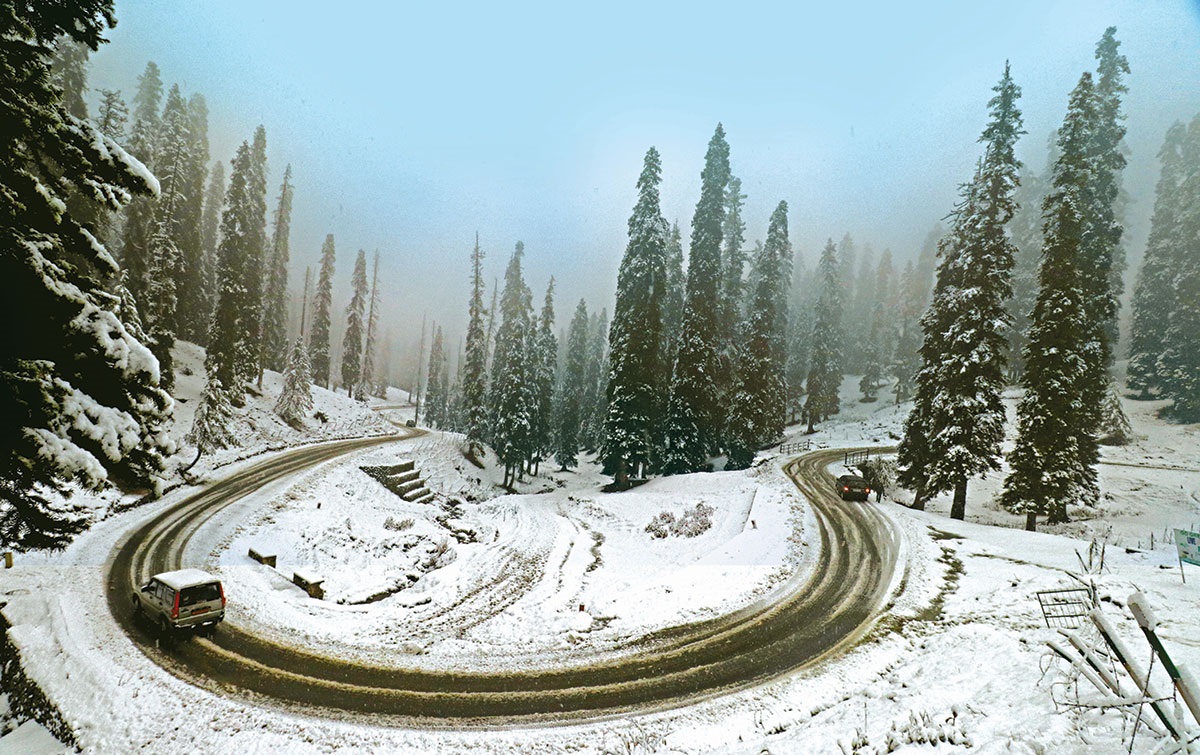The largest telescope on earth is going to be installed in Ladakh, which will be used to study cosmic gamma ray sources, Tasavur Mushtaq reports.
Ladakh is going to host the largest telescope of the world as the Science and Technology department is installing a giant telescope at the Pangong Lake, near Line of Actual Control on the Sino-Indian divide.
To install the telescope, Indian Institute of Astrophysics (IIA) studied two other sites – Hanle (Leh) and Devasthal near Nainital in Uttarakhand – but eventually opted for Merak in Ladakh. Officials say the site was selected a careful study of various scientific and environmental aspects.
The site at Merak was very promising because it offered longer sunshine hours, Professor Tushar P Prabhu of IIA said.
“Its main aim will be to capture the cosmic gamma ray sources. Along with the 21-metre diameter optical light collector, the telescope is also armed with a large array of photo multipliers to enhance the process,” says Prabhu, Professor-in-Charge at Hanle’s Indian Astronomical Observatory (IAO). “The gamma rays are high energy processes in the universe. Their study will help us in understanding the high energy physics close to black holes, compact objects, dark matter and high gravitational fields.”
Prabhu reportedly said that it would be world’s largest solar telescope fitted with a 2 meter reflector and will help scientists in carrying out cutting edge research to understand the fundamental processes taking place on the sun.
The solar telescope will help the scientific community to study the long term changes in earth’s climate and environment, and will provide useful data to carry out research in order to minimize or remove disruptions to communication network and satellites due to periodic solar winds.
A high level delegation of the expert and academics from the Bangalore based Indian Institute of Astrophysics sought the cooperation from the state government in making the project a reality. State’s Chief Secretary Madhav Lal has assured “every possible help”.
 The National Large Solar Telescope (NLST) project is a major multi-party initiative involving IIA, Indian Space Research Organisation (ISRO), Aryabhatta Research Institute of Observational-Sciences, Tata Institute of Fundamental Research (TIFR) and Inter-University Centre for Astronomy and Astrophysics (IUCAA). The project going on for more than a decade now involves an investment of over Rs 250 crore, most of which will go into procuring equipment.
The National Large Solar Telescope (NLST) project is a major multi-party initiative involving IIA, Indian Space Research Organisation (ISRO), Aryabhatta Research Institute of Observational-Sciences, Tata Institute of Fundamental Research (TIFR) and Inter-University Centre for Astronomy and Astrophysics (IUCAA). The project going on for more than a decade now involves an investment of over Rs 250 crore, most of which will go into procuring equipment.
Once installed, the telescope will take over the number one status from the McMath-Pierce Solar Telescope that has a diameter of 1.6 meters in Kitt Peak National Observatory at Arizona in the US, as the biggest telescope. This solartelescope can study particles spread across 50 km of the sun.
The department of science and technology is already running an astronomical observatory at Hanle, it was the first eve major installation of the IIA in the state. It has helped scientific community to published more than 100 papers on astronomy, so far.
Situated at around 15000 ft above sea level, Hanle has 250 clear nights in a year. IIA is working to make Hanle world’s fourth largest observatory in next two years. Hanle is providing perfect 360 degree view for the observatory and this site is all set to become world’s fourth largest observatory facility within next two years.
The cloudless skies and low atmospheric water vapour make it one of the best sites in the world for optical, infrared, sub-millimeter, and millimeter wavelengths, according to the IIA experts.
After frequenting the spot In Hanle in Nilamkhul Plain of Changthang belt of the desert called Digpa-ratsa Ri (now renamed Mount Saraswati after a Hindu goddess) till 1994, an IIA team camped there for long time in December 1994.
The astrophysicists were quite amazed by the fact that the site has low seismicity, with an annual rainfall of less than 2 mm with 260 spectroscopic nights a year and 190 photometric nights a year. It was the first major project in trans-Himalayan region. The project has cost IIA over Rs. 200 Crore. The observatory has a 2-m optical-infrared telescope, which is remotely operated from CREST, Hosakote, using dedicated satellite links.
The IIA is setting up a 21-metre diameter telescope here, which will collect the gamma rays in space and help astro-physicists in studying their origin.
The effort to establish the facility is being led by Mumbai based Bhabha Atomic Research Centre (BARC), in collaboration with Tata Institute of Fundamental Research (TIFR) Mumbai, and Saha Institute of Nuclear Physics (SINP), Kolkata.
“We are expected to be operational by 2018 enabling a 24×7 observation of the universe,” said Prof Ramesh Koul, Head, and Astrophysical Sciences Division of Bhabha Atomic Research Centre (BARC) at a public lecture series ‘Vistas’ in Astronomy at Nehru Planetarium.















